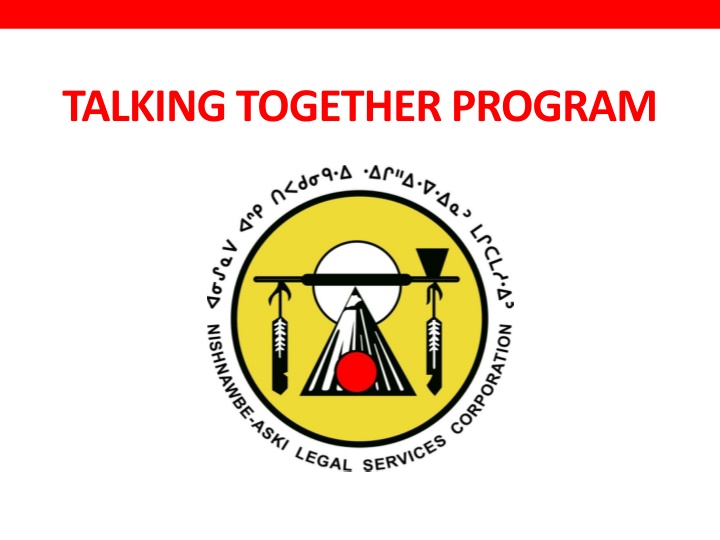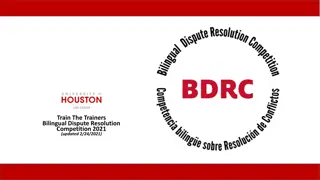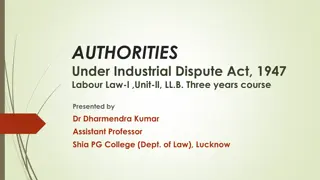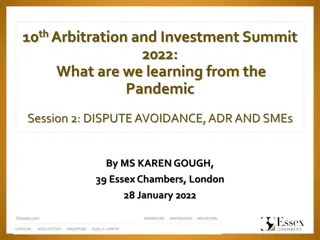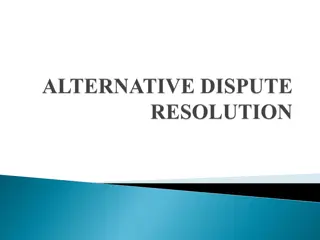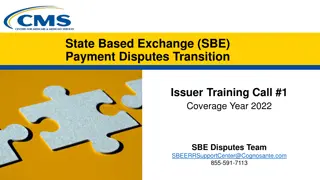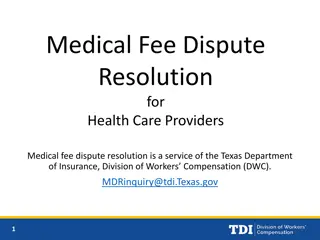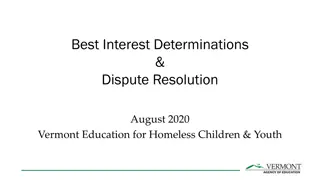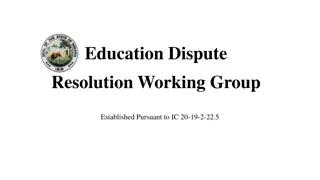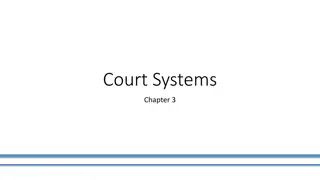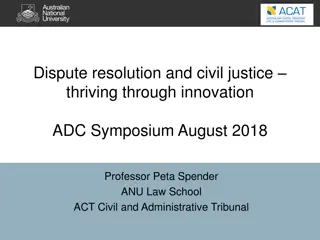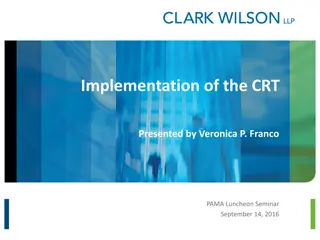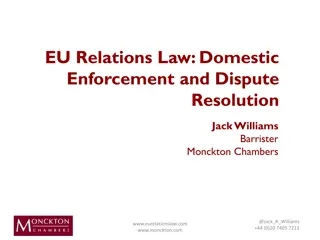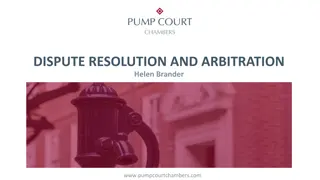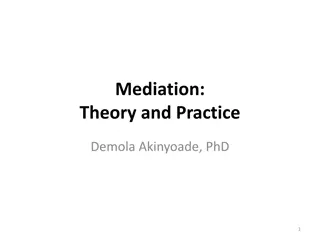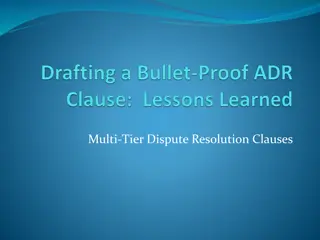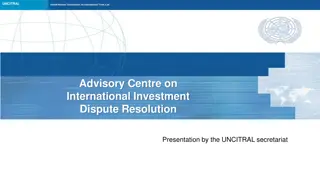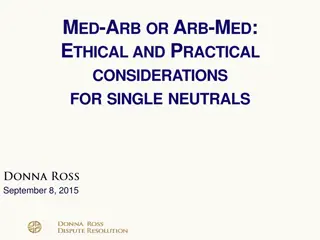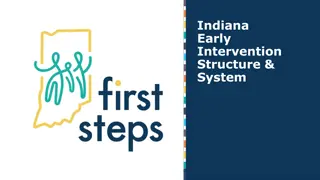Innovative Dispute Resolution Method: Talking Together Program
Talking Together is an innovative method of dispute resolution based on traditional circles held in First Nations, focusing on restoring harmony between family members. This program provides an alternative to the Court process, prioritizing community support and cultural continuity in child protection issues. By involving family members, agency representatives, and community Elders in circles, participants work together to resolve issues towards healing and repairing harm.
Download Presentation

Please find below an Image/Link to download the presentation.
The content on the website is provided AS IS for your information and personal use only. It may not be sold, licensed, or shared on other websites without obtaining consent from the author.If you encounter any issues during the download, it is possible that the publisher has removed the file from their server.
You are allowed to download the files provided on this website for personal or commercial use, subject to the condition that they are used lawfully. All files are the property of their respective owners.
The content on the website is provided AS IS for your information and personal use only. It may not be sold, licensed, or shared on other websites without obtaining consent from the author.
E N D
Presentation Transcript
What is Talking Together Talking Together is an innovative method of dispute resolution based on traditional circles held in First Nations and used since time immemorial to restore harmony between family members. By bringing people together in a non-judgmental way, a plan will emerge which has the support of the community. This provides an alternative to the Court process (that frequently results in children being removed from their home community) and returns control to First Nations concerning the planning and protection of their children.
Program Advantages Talking Together recognizes the capacity of kin network to protect Aboriginal children and emphasizes the importance of cultural continuity in placements. The process is a less intrusive method of dealing with family problems and protection issues, alleviating the need for the often costly and adversarial Family Law Court system. The participants and community work as a group to resolve issues toward healing. The process looks at who has been affected and how they have been affected by the problems the family is experiencing; thus, provides an opportunity for participants to work together to repair the harm.
Talking Together Circle Process The Talking Together Circle is composed of family members, front line workers, agency representatives, community Elders and community representatives. The Circle looks at who has been affected and how they have been affected by the problems the family is experiencing. Secondly, the Circle participants, What can be done? If an agreement is reached it will be used as a basis for the Plan of Care and can be filed with the Court. asks the
Alternative Dispute Resolution From the Child, Youth and Family Services Act, 2017, PART IV Resolution of issuesby prescribed method of alternativedisputeresolution 17 (1) If a child is or may be in need of protection under this Act, a society shall consider whether a prescribed method of alternative dispute resolution could assist in resolving any issue related to the child or a plan for the child scare. First Nation, Inuk or Metis child (2) If the issue referred to in subsection (1) relates to a First Nation, Inuk or Metis child, the society shall consult with a representative chosen by each of the child s band and First Nation, Inuit or Metis communities to determine whether an alternative dispute resolution process established by that bands and communities or another prescribed alternative dispute resolutionprocess could assist in resolving the issue. Children s Lawyer (3) If a society or a person, including a child, who is receiving child welfare services proposes that an alternative dispute resolution method or process referred to in subsection (1) or (2) be undertaken to assist in resolving an issue relating to a child or a plan for the child s care, the Children s Lawyer may provide legal representation to the child if, in the opinion of the Children s Lawyer, such legal representation is appropriate. Notice to band, community (4) If a society makes or receives a proposal that an alternative dispute resolution method or process referred to in subsection (1) or (2) be undertaken under subsection (3) in a matter involving a First Nations, Inuk or Metis child, the society shall give notice of the proposal to a representative chosen by each of the child s bands and First Nations, Inuit or Metis communities.
Issues Proposed for ADR Child Apprehended Parent wants Child Returned Child Apprehended Parent wants Child placed with Extended family CAS seeking Crown wardship Crown wardship Orders/ Reviews (ADR) Adoption Customary Care Parents want Access and Visitation with Child Extended family wants Access and Visitation with Child Extended family wants Custody of Child Repatriation Expiring Temporary Care Agreement (ADR) Long Term Care Issues Terms of Supervision Orders (ADR) Placement Issues (ADR) Parent/ Teen Conflict (ADR) CAS Intervention Admission/ Apprehension Prevention
Testimonials Circle strengthens the family unit. It helps break the cycle of family dysfunction and brings the family together. The circle is very effective and evidence based to help the family move along in their healing. I recommend circles for families to strengthen and work on their healing journey. Keep spreading the word, these circles are amazing and very helpful for all those involved. Sharing concerns and providing support is a great way to communicate in a circle where it feels safe around others. Conflict resolution was awesome! Left feeling at peace and goals were set. Sharing circle was beautiful just the way it was I left feeling confident for the future. It is important to be flexible when discussing the plan for a child and that is what happened today. Circle was helpful in returning the client s children to her care and planning for success. Circle was very helpful to achieve the family s and the agency s goals. The circle was great. Atmosphere was non-judgmental. Everyone was able to share openly and suggest solutions. No improvement needed. Thank you.
Contact Information & Site Locations Servicing Thunder Bay & Surrounding First Nations Aroland, Constance Lake, Eabametoong, Ginoogaming, Hornepayne, Long Lake #58, Marten Falls, Neskantaga, Nibinamik, Webequie, and Thunder Bay Carol Buswa, Director of Services Tel: (807) 474 4379 Fax: (807) 622 1096 Toll Free: 1 800 465 5581 Email: cbuswa@nanlegal.on.ca Zelda Watt, Assistant/Coordinator Tel: (807) 474 4376 Fax: (807) 622 1096 Toll Free: 1 800 465 5581 Email: zwatt@nanlegal.on.ca Servicing Sioux Lookout & Surrounding First Nations Bearskin Lake, Cat Lake, Deer Lake, Fort Severn, Kasabonika Lake, Keewaywin, Kitchenuhmaykoosib Inninuwug, Lac Seul, MacDowell Lake, Mishkeegogamang, Muskrat Dam, North Caribou Lake, North Spirit Lake, Pikangikum, Poplar Hill, Sachigo Lake, Sandy Lake, Slate Falls, Wapekeka, Wapekapewin, Wunnumin Lake and Sioux Lookout Kingfisher Lake, Thunder Bay & Area Tel: (807) 474 4375/4378 Fax: (807) 622 1096 Toll Free: 1 800 465 5581 Sioux Lookout & Area Tel: 1 800 465 5581 Fax: (807) 622 1096 Servicing Timmins & Surrounding First Nations Beaverhouse, Brunswick Chapleau Ojibway, Flying Mattagami, Missanabie Cree, Taykwa Tagamou Nation, Wahgoshig, and Timmins House, Chapleau Post, Cree, Matachewan, Timmins & Area Tel: (705) 268 1105 Fax: (705) 268 5682 Toll Free: 1 877 268 0335 Servicing James Bay & Surrounding First Nations Attawapiskat, Fort Albany, Kashechewan, MoCreebec Council of the Cree Nation, Moose Cree, Moose Factory, Weenusk, and Moosonee James Bay & Area Tel: (705) 336 0714 Fax: (807) 622 1096
Activity Trend Analysis (2015-2018) Apr 2015-Mar 2016 Apr 2016-Mar 2017 Apr 2017-Mar 2018 919 755 622 555 424 395 257 181 173 137 135 126 # of Clients # of Circles # of Circle Participants # of Children Served
